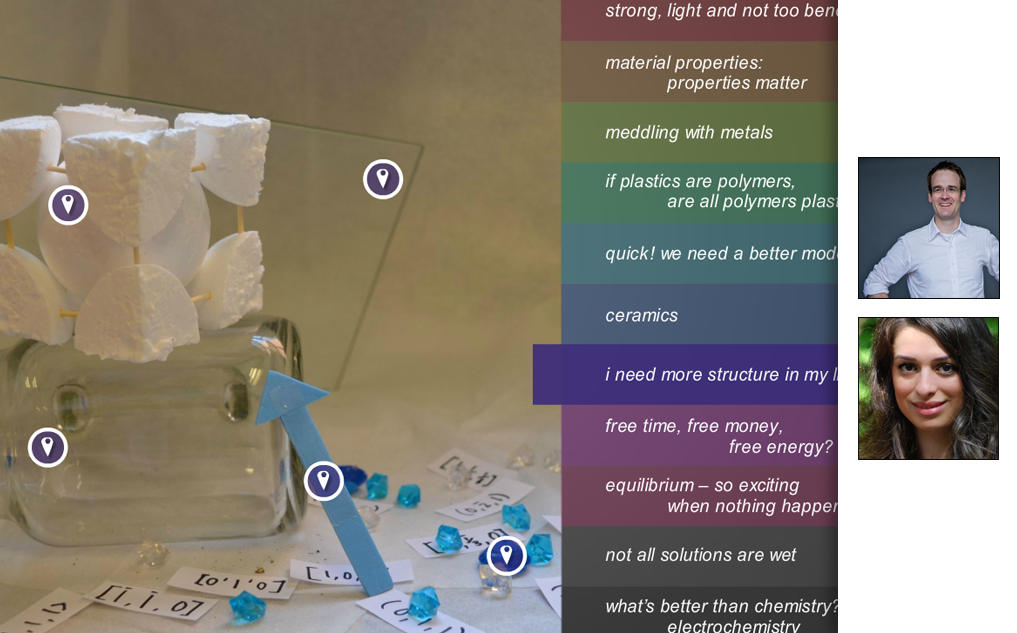Module Overview
Learning Outcomes
- Describe the requirements for optical transparency in terms of scattering events
- Recognize that neither crystallinity nor glassy microstructure are requirements for optical transparency
- Explain the electromagnetic spectrum in terms of photon energy and photon wavelength
- Use the Bohr model of the atom to explain absorption and emission of energy accompanying transitions in electron energy levels
- Identify the shortcomings of the Bohr model, specifically the need for four quantum numbers to fully describe the energy level of an electron
- Determine the electron configuration of a neutral atom
- Provide intuitive descriptions of each of the four quantum numbers
- Apply the principle of octet stability to explain covalent, ionic and metallic (sea-of-electrons) bonding
- Differentiate between the mechanism of formation of each of the primary bonds and provide examples of several properties that can be explained by each
- Conclude that crystals form in ordered solids according to a decrease in energy
- Demonstrate how the allowable energy states in an isolated atom separate into many closely spaced states in the formation of a solid leading to a band structure
- Apply the band theory of solids to explain the classification of materials as metals, insulators, and semiconductors
- Justify the optical transparency or opacity of a material in terms of its band structure and the energy of the incident photons
- Explain the tetrahedral symmetry found in diamond, silicon or methane in terms of the sp3 hybridized bonding
PROJECT FILES
| Title | Author | Description |
|---|---|---|
|
|
CC BY |
| Title | Author | Description |
|---|---|---|
|
|
Scott Ramsay |
(Duration: 11:35) |
|
|
Scott Ramsay |
(Duration: 14:07) |
|
|
Scott Ramsay |
(Duration: 11:11) |
|
|
Scott Ramsay |
(Duration: 10:17) |
|
|
Scott Ramsay |
(Duration: 05:41) |
|
|
Scott Ramsay |
(Duration: 10:40) |
|
|
Scott Ramsay |
(Duration: 05:40) |
|
|
Scott Ramsay |
(Duration: 05:52) |
|
|
Scott Ramsay |
(Duration: 08:24) |
|
|
Scott Ramsay |
(Duration: 05:12) |
|
|
Scott Ramsay |
(Duration: 14:09) |
|
|
Scott Ramsay |
(Duration: 17:04) |
|
|
Scott Ramsay |
(Duration: 17:42) |
|
|
Scott Ramsay |
(Duration: 06:09) |
|
|
Scott Ramsay |
(Duration: 08:23) |

